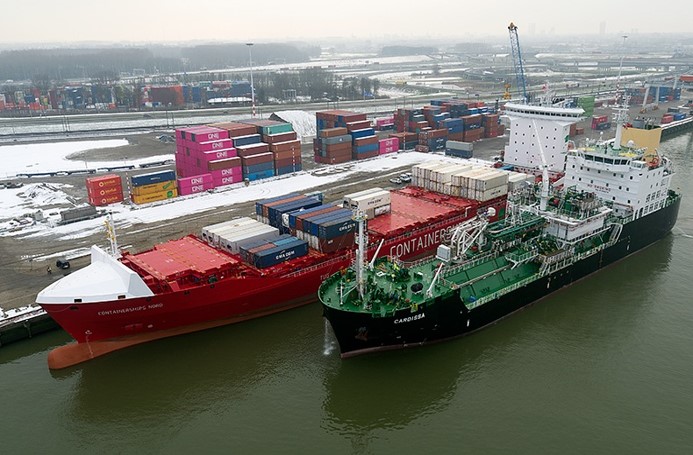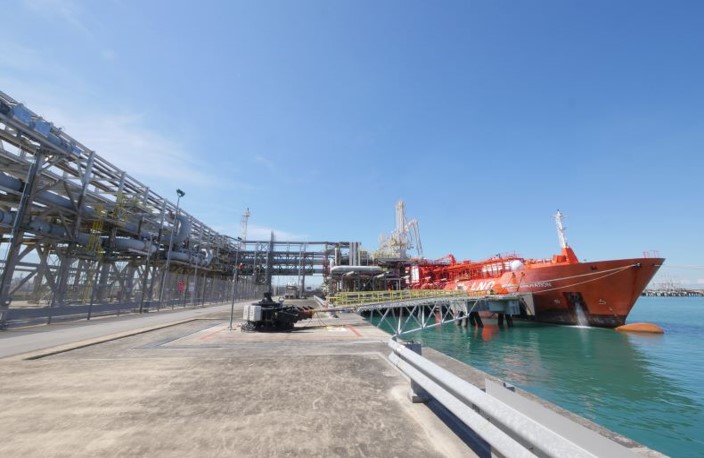 KR Webzine Vol.165
KR Webzine Vol.165
- Dec. 2021
- Nov. 2021
- Oct. 2021
- Sep. 2021
- Aug. 2021
- Jul. 2021
- Jun. 2021
- May. 2021
- Apr. 2021
- Mar. 2021
- Feb. 2021
- Jan. 2021
- Dec. 2020
- Nov. 2020
- Oct. 2020
- Sep. 2020
- Aug. 2020
- Jul. 2020
- Jun. 2020
- May. 2020
- Apr. 2020
- Mar. 2020
- Feb. 2020
- Jan. 2020
- Dec. 2019
- Nov. 2019
- Oct. 2019
- Sep. 2019
- Aug. 2019
- Jul. 2019
- Jun. 2019
- May. 2019
- Apr. 2019
- Mar. 2019
- Feb. 2019
- Jan. 2019
- Dec. 2018
- Nov. 2018
- Oct. 2018
- Sep. 2018
- Aug. 2018
- Jul. 2018
- Jun. 2018
- May. 2018
- Apr. 2018
- Mar. 2018
- Feb. 2018
- Jan. 2018
- Dec. 2017
- Nov. 2017
- Oct. 2017
- Sep. 2017
- Aug. 2017
- Jul. 2017
- Jun. 2017
- May. 2017
- Apr. 2017
- Mar. 2017
- Feb. 2017
- Jan. 2017
- Dec. 2016
- Nov. 2016
- Oct. 2016
- Sep. 2016
- Aug. 2016
- Jul. 2016
- Jun. 2016
- May. 2016
- Apr. 2016
- Mar. 2016
- Feb. 2016
- Jan. 2016
- Dec. 2015
- Nov. 2015
- Oct. 2015
- Sep. 2015
- Aug. 2015
- Jul. 2015
- Jun. 2015
- May. 2015
- Apr. 2015
- Mar. 2015
- Feb. 2015
- Jan. 2015
- Dec. 2014
- Nov. 2014
- Oct. 2014
- Sep. 2014
- Aug. 2014
- Jul. 2014
- Jun. 2014
- May. 2014
- Apr. 2014
- Mar. 2014
- Feb. 2014
- Jan. 2014
- Dec. 2013
- Nov. 2013
- Oct. 2013
- Sep. 2013
- Aug. 2013
- Jul. 2013
- Jun. 2013
- May. 2013
- Apr. 2013
- Mar. 2013
- Jan. 2013
- Dec. 2012
- Nov. 2012
- Oct. 2012
- Sep. 2012
- Aug. 2012
- Jul. 2012
- Jun. 2012
- May. 2012
- Apr. 2012
- Mar. 2012
- Feb. 2012
- Jan. 2012
- Dec. 2011
- Nov. 2011
- Oct. 2011
- Sep. 2011
- Aug. 2011
- Jul. 2011
- Jun. 2011
- May. 2011
- Apr. 2011
- Mar. 2011
- Feb. 2011
- Jan. 2011
- Dec. 2010
- Nov. 2010
- Oct. 2010
- Sep. 2010
- Aug. 2010
- Jul. 2010
- Jun. 2010
- May. 2010
- Apr. 2010
- Mar. 2010
- Feb. 2010
- Jan. 2010
- Dec. 2009
- Nov. 2009
- Oct. 2009
- Sep. 2009
- Aug. 2009
- Jul. 2009
- Jun. 2009
- May. 2009
- Apr. 2009
- Mar. 2009
- Feb. 2009
- Jan. 2009
- Dec. 2008
- Nov. 2008
- Oct. 2008
- Sep. 2008
- Aug. 2008
- Jul. 2008
- Jun. 2008
- May. 2008
- Apr. 2008
- Mar. 2008
- Feb. 2008
11
November 2021
-
HIGHLIGHTS
- KR Successfully Hosts the 27th ISO Regular Seminar
- KR and Republic of Korea Naval Logistics Command sign a Business Agreement for the Development of Quality Inspection for Military Supplies
- KR and Korea Coast Guard Sign a Business Agreement to enhance expertise on Naval Technologies
- KR Participates in KORMARINE 2021
- R&D ISSUES
- TECHNICAL INFORMATION
- NOTICE BOARD
IMO's regulations on sulfur oxides are fully enforced, and the demand for LNG bunkering is also increasing along with the increase in LNG fuel-powered ships. Although LNG is not free from carbon emission, it can be used as a transitional fuel, so the facilities and regulations necessary for LNG bunkering are analyzed in this paper. For LNG bunkering in a port to be carried out, the port authority's bunkering safety zone designation, bunkering facility construction, offshore bunkering procedures, and operator selection procedures must be prepared. The private operator must prepare to introduce bunkering ships to conduct business. In this paper, the construction status of LNG bunkering infrastructure in Singapore and Rotterdam is examined and its implications for providing commercial LNG bunkering in Korean ports are inferred.
1. LNG bunkering status
▶ Current status of LNG fueled ships
There are about 150 ships around the world that use LNG as fuel, excluding LNG carriers. However, with 147 vessels under construction and renovation, more than 297 vessels will be operated on LNG within a few years.
<Current status of LNG fueled ships>
|
delivered |
Order book |
Total |
|
|
Newbuilding |
141 |
134 |
275 |
|
Renovation |
9 |
13 |
22 |
|
Total |
150 |
147 |
297 |
▶ LNG bunkering sales in Singapore and Rotterdam
Singapore and Rotterdam are bunkering hubs for traditional marine fuel oil. However, after years of preparations to build a foundation for LNG bunkering, they are emerging as a leading region in LNG bunkering sales after the IMO's sulfur oxide regulation was enforced. In the case of Rotterdam and Singapore, LNG bunkering sales volume is rapidly increasing from 2020, when the IMO's stricter regulations on sulfur oxides were applied.
<LNG bunkering sales status>
|
Rotterdam |
Singapore |
|
|
LNG bunkering
sales |
▪ 2017 1,500MT
▪ 2018
9,500MT
▪ 2019
31,944MT
▪ 2020
139,686MT (~3Q) |
- Truck to Ship, 100 times
▪
2020 (~3Q)
- Truck to Ship, 270 times
- Ship to Ship, 300 times |
2. Establishment of LNG bunkering infrastructure
▶ LNG bunkering infrastructure area
The major factors of infrastructure construction for LNG bunkering are there are the port authority's LNG bunkering port supply infrastructure facilities, establishing ship-to-ship bunkering safety regulation and LNG bunkering operators' LNG bunkering vessel introduction. After these requirements are met, a ship-to-ship bunkering test operation should be conducted to see if LNG bunkering can be safely carried out. Commercial bunkering begins only after safety has been secured.
<Categories of LNG bunkering infrastructure construction>
|
Category |
Preparation |
|
LNG bunkering infra at port |
- on shore LNG terminal
- Jetty to supply LNG to
LNGBV, etc. |
|
Ship-to-Ship
Bunkering regulation |
- Quantitative risk analysis
- Safety distance
analysis (berth and Anchorage)
- Port-specific bunkering safety regulations |
|
LNG bunkering
operator selection procedures |
- exclusive licensee for LNG bunkering
- LNG bunkering vessel
owner |
|
LNG bunkering vessels |
- newbuilding
- existing vessel charter |
▶ LNG supply infrastructure at port
ㅇ Singapore
The Port of Singapore built a second berth for the operation of small LNG ships, including an LNG bunkering vessel, at the SLNG terminal on Jurong Island in February 2019.
<Singapore Port LNG Supply Infrastructure>
ㅇ Rotterdam port
The Port of Rotterdam is divided into five areas, and the facility from which LNGBV ships receive LNG is located at the Gate LNG Terminal, which is the port entrance, and a third jetty facility for LNGBV was added in 2016. LNG transportation through trucks, inland transportation, LNG bunkering, and a small amount of LNG re-export at the Gate Terminal are being considered.
<Rotterdam port LNG supply infrastructure>
* Source : Navionics
▶ Ship-to-Ship bunkering area
ㅇ Singapore
Singapore Port has 33 anchoring areas, among which five areas, 4, 5, 11, 27 and 30 on the following map, are for LNG bunkering.
<Singapore port bunkering area>
* source : MPA
ㅇ Rotterdam port
The Port of Rotterdam conducted a risk analysis to secure the safety of LNG bunkering for large ships using LNGBV. In August 2012, under the participation of DNV, the safety distance analysis for each LNG bunkering area, the mooring stability analysis during Ship-to-Ship bunkering, and the collision analysis with passing ships were conducted.
<Analysis of safe zone for LNG bunkering in the Port of Rotterdam>
* source : Port of Rotterdam
▶ LNG bunkering safety regulations and selecting operators
ㅇ Singapore
Singapore has been running an LNG bunkering pilot program until 2020. Fuel LNG and Pavilion Gas have been granted LNG bunkering business license, and Technical Reference 56 for a risk review of LNG bunkering and securing safety of bunkering procedures was prepared in 2017. Ship-to-Ship LNG bunkering is also subject to the same regulations.
<Singapore LNG Bunkering Safety Regulation TR56>
* source : MPA
ㅇ Rotterdam
In Rotterdam, IAPH's Audit Tool is used when selecting bunkering operators, and as of December 2018, seven companies were selected. The Rotterdam Port Authority's bunkering response procedures are following EMSA's (European Maritime Safety Agency) bunkering guidelines. The bunkering procedure follows the IAPH (International Association of Ports and Harbors) Ship-to-Ship bunkering checklist.
<EMSA's LNG Bunkering Guidelines for Port Authorities>
* source : EMSA
▶ LNG bunkering vessel
The LNGBV ‘Cardissa’ operated by Shell in Singapore is 6,500 CBM and was built by STX Offshore & Shipbuilding in 2017. In Rotterdam, Pavilion Gas chartered a 10,030 CBM small-scale tanker ‘Norgas Innovation’ in 2019. Pavilion Gas plans to introduce 12,000m3 membrane type LNGBV (with Japanese MOL company) in 2021.
|
|
|
<Rotterdam : Ship-to-Ship LNG bunkering vessels><Singapore: LNG bunkering tankers ships>
* source: Port of Rotterdam, MPA
3. Summary and conclusion
▶ LNG bunkering infrastructure in Rotterdam and Singapore
Rotterdam and Singapore are prepared for the following infrastructures and regulations to provide LNG bunkering services.
<Preparation of LNG bunkering in Singapore and Rotterdam>
|
Category |
Rotterdam |
Singapore |
|
LNG
bunkering infra at port |
- LNG Terminal construction
- Jetty for LNGBV
* Small-scale LNG supply hub |
- LNG Terminal construction
- Jetty for LNGBV
* Small-scale LNG supply hub |
|
LNGBV |
- One LNGBV
in operation (new built)
- Considering
an order of LNGBV |
-
Chartered one LNGBV in operation
-
Considering an order
of LNGBV |
|
Ship-to-Ship
bunkering safety regulation |
- Quantitative
risk analysis
-
Safety distance analysis (berth and Anchorage)
-
Port-specific bunkering safety regulations |
- Quantitative
risk analysis
-
Safety distance analysis (berth and Anchorage)
-
Port-specific bunkering safety regulations |
|
LNG bunkering
operator |
7 companies have business licenses |
2 companies have business licenses |
|
Ship-to-Ship
Bunkering
Track Record |
Started in January 2019 |
Started in May 2019 |
▶ Proposals for Korea's LNG bunkering business for ocean-going vessels
As in the case of Singapore and Rotterdam, in order for LNG bunkering to become fully operating in Korea, it is necessary to enable LNG bunkering to ships loading and unloading cargo from berths. For this purpose, it is necessary to establish LNG bunkering facilities at port and set a safe distance based on quantitative risk analysis of ship-to-ship bunkering. After these regulations are prepared, the bunkering operators are to be selected, and then the bunkering operators are to introduce bunkering vessels. For reference, to use eco-friendly fuels such as methanol, ammonia, and hydrogen to ships, facilities and regulations similar to those of LNG should be prepared.




